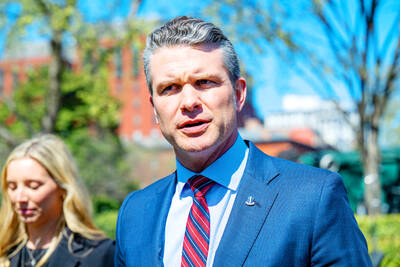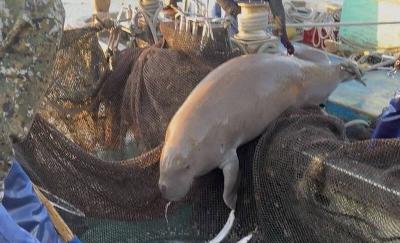More than 90 percent of the nation’s annual import of soybeans, estimated at about 2.3 million tonnes, are genetically modified, industry representatives and experts said.
In addition, about 10 percent of them are processed into all kinds of soybean-based foods, drinks and condiments that are not properly labeled as containing genetically modified organism (GMO) materials or are labeled, but still favored by ill-informed consumers, they added.
According to statistics from the Council of Agriculture, Taiwan’s major suppliers of soybeans are Brazil and the US.
Because imported Brazilian soybeans are not made for processing, Taiwan’s soy food products are mainly made of soybeans imported from the US.
However, experts at a forum on genetically modified foods on Thursday said 90 percent of the soybeans imported from the US are genetically modified, and are grown to be sold and used as livestock feed in the US’ domestic market.
Most Taiwanese consumers are not aware of the health risks of genetically modified foods, the Chinese Tofu Association director-general Chan Wu-hsiung (詹武雄) said.
“Our neighboring countries including Japan, South Korea, China, Malaysia and Vietnam have all been weaned from GMO soybeans and started to consume non-GMO soybeans. Why is it that our government has been so hesitant about setting up rules and changing the habit?” Chan said.
National Taiwan University agronomy professor Warren Kuo (郭華仁) presented a research study by French scientist Gilles-Eric Seralini and his co-authors on the effect of genetically modified corn on laboratory rats, which concluded that rats fed corn genetically modified for herbicide resistance developed tumors.
Kuo urged the public to take heed of the potential risks accompanied by the consumption of genetically modified foods and called on the government to establish clearer regulations to rein in the genetically modified food industry.

‘DENIAL DEFENSE’: The US would increase its military presence with uncrewed ships, and submarines, while boosting defense in the Indo-Pacific, a Pete Hegseth memo said The US is reorienting its military strategy to focus primarily on deterring a potential Chinese invasion of Taiwan, a memo signed by US Secretary of Defense Pete Hegseth showed. The memo also called on Taiwan to increase its defense spending. The document, known as the “Interim National Defense Strategic Guidance,” was distributed this month and detailed the national defense plans of US President Donald Trump’s administration, an article in the Washington Post said on Saturday. It outlines how the US can prepare for a potential war with China and defend itself from threats in the “near abroad,” including Greenland and the Panama

A wild live dugong was found in Taiwan for the first time in 88 years, after it was accidentally caught by a fisher’s net on Tuesday in Yilan County’s Fenniaolin (粉鳥林). This is the first sighting of the species in Taiwan since 1937, having already been considered “extinct” in the country and considered as “vulnerable” by the International Union for Conservation of Nature. A fisher surnamed Chen (陳) went to Fenniaolin to collect the fish in his netting, but instead caught a 3m long, 500kg dugong. The fisher released the animal back into the wild, not realizing it was an endangered species at

The Chinese Nationalist Party (KMT) is maintaining close ties with Beijing, the Democratic Progressive Party (DPP) said yesterday, hours after a new round of Chinese military drills in the Taiwan Strait began. Political parties in a democracy have a responsibility to be loyal to the nation and defend its sovereignty, DPP spokesman Justin Wu (吳崢) told a news conference in Taipei. His comments came hours after Beijing announced via Chinese state media that the Chinese People’s Liberation Army’s Eastern Theater Command was holding large-scale drills simulating a multi-pronged attack on Taiwan. Contrary to the KMT’s claims that it is staunchly anti-communist, KMT Deputy

The High Prosecutors’ Office yesterday withdrew an appeal against the acquittal of a former bank manager 22 years after his death, marking Taiwan’s first instance of prosecutors rendering posthumous justice to a wrongfully convicted defendant. Chu Ching-en (諸慶恩) — formerly a manager at the Taipei branch of BNP Paribas — was in 1999 accused by Weng Mao-chung (翁茂鍾), then-president of Chia Her Industrial Co, of forging a request for a fixed deposit of US$10 million by I-Hwa Industrial Co, a subsidiary of Chia Her, which was used as collateral. Chu was ruled not guilty in the first trial, but was found guilty